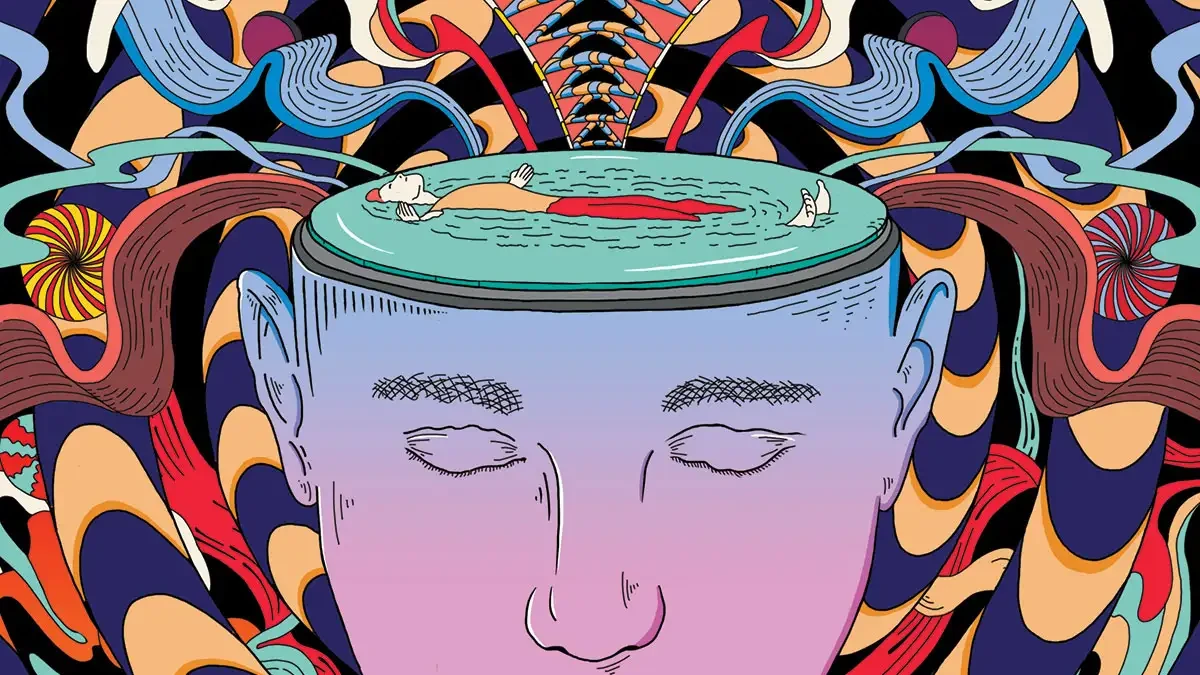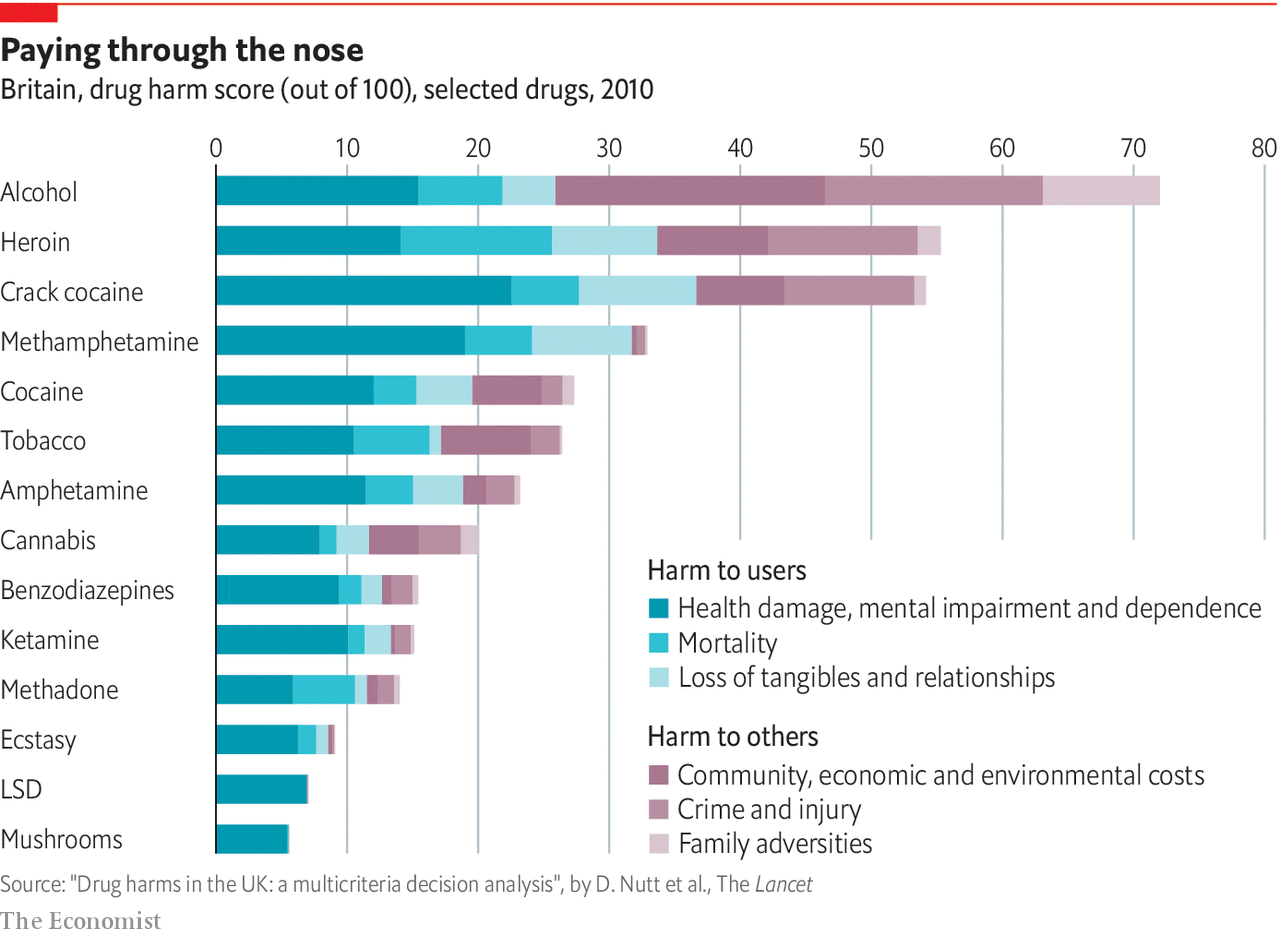Magic Pills: Evil or a New Era of Psychotherapy and Neurobiology?

Fortunately or unfortunately, the fact remains that the era of the drug war is slowly ending. Punitive drug policy has shown that aggression in such complex issues as the control of psychoactive substances leads to disastrous consequences. As a result, the war on drugs is lost in favor of some chemical formulas (BBC Russian, 2011).
However, you should not assume that this loss leads to some negative consequences, and the whole world will be mired in fatal narcotic ecstasy. Changes in drug policy will allow a different look at the issues of regulation of psychoactive substances and their possible benefits in areas where they have not been used or used illegally.
I would like to say right away that even though a large group of substances were used in psychotherapy, practical psychoanalysis, and neurobiology (the official list: LSD, psilocybin, DMT/ Tryptamines, MDMA, ketamine (the USSR, Russia), mescaline, and 2C-B), I will briefly talk only about 3,4-Methylenedioxymethamphetamine (MDMA, “ecstasy”) and Lysergic Acid Diethylamide (LSD, “acid”) in my work.
In this paper, I will often talk about such things as trauma and post-traumatic syndrome. That is why I consider it important to start by determining what trauma is in terms of psychoanalysis. One of the first who raised issues of trauma and post-traumatic syndrome was Freud. Post-traumatic syndrome, as the name implies, is formed because of any experience that is traumatic for the individual. Here is what Freud wrote about the origin of a trauma: “Any experience which calls up distressing effects — such as those of fright, anxiety, shame or physical pain — may operate as a trauma; and whether it in fact does so depends naturally enough on the susceptibility of the person affected (as well as on another condition which will be mentioned later)” (Breuer & Freud, 1995, p.4). The major symptom of this disease is obsessive memories of previous trauma. Therefore, solving the problem of memories can help solve the syndrome itself. That is why reflection, and not just cutting out pieces of memory, can help in the treatment of this ailment.
And as Malabou (2012, p.14) wrote, referring to Zizek:
Forms of post-traumatic subjectivity, as Zizek calls it; new figures of the void or of identitarian abandonment who elude most therapies, especially psychoanalysis
However, what could be an alternative solution to this problem? Perhaps a new form of psychotherapy, such as psychedelic therapy, solves this problem.
It is worth starting with acid since it was studied only from the perspective of brain research. Practical use in psychoanalysis has not been officially conducted, however, those experiments that had been carried out before the ban showed some data. One of the most unusual methods of using LSD is to use this substance in the treatment of cluster pain. Scientists came to this decision when they found out that LSD and psilocybin are ergolines that are used in treatment right now. LSD has also been used as an antidepressant for terminally ill people. Of course, the acid did not eliminate the disease itself. However, the mental state of the patients improved markedly. They were much more comfortable with thoughts about potential death.
From this, two potential options for using LSD in psychoanalysis: micro-dosing and reflection. Micro-dosing is the use of a substance in such small quantities that it cannot exhibit psychoactive properties, but it will still work. While there is no scientific evidence that it works with absolute probability, however, as Eve Ivory (Medium, 2017) wrote referring to the words of Amanda Fielding, “it was obvious to me that LSD improves cognitive abilities, in particular some kind of intuitive pattern recognition.” Other micro-dosing users also claim that they have improved various skills, especially creativity.
If we consider the other side of the use of LSD, reflection, then we need normal doses. After the main visual effects of LSD, the human brain continues to work in an enhanced mode; however, it becomes easier to connect thoughts among themselves. Many users at this stage go into reflection, completely revising their view of what happened in the past, and finding new ways to solve current problems. Someone calls this stage enlightenment and believes that LSD completely changed his/her mindset. Under the supervision of a specialist, this stage can be used to solve problems that arose in the past. For example, alternative approaches to analyzing the past can change attitudes towards traumatic events, which will cure post-traumatic syndrome. However, there is a downside: a person may have a so-called bad trip, which can become a new traumatic event for his/her psyche. The observation of a psychotherapist during a drug trip may help to avoid such scenarios; however, no one excludes negative effects. In addition, bad trips that are too hard for the psyche can lead to severe panic attacks and the manifestation of latent mental disorders in the patient. Accordingly, the use of acid for psychotherapeutic purposes should be under the strictest supervision of a specialist.
Let us move on to MDMA, which is more interesting for psychotherapy. In 2017, MDMA therapy was called a breakthrough (Multidisciplinary Association for Psychedelic Studies, 2017), and there were hopes for using this method. I think this is a great reason to consider this method critically. MDMA is an empathogen; it liberates a person in the context of communication. A person, whether he wants it or not, begins to talk a lot, especially about himself or his/her problems. However, due to the effect of “rose-colored glasses” a person does not feel negative emotions even concerning traumatic events. The patient expresses everything that he could not say while being sober and shares all his/her experiences, thereby experiencing a kind of catharsis. Besides, the effect of powerful euphoria helps to forget about all the hardships of gray everyday life. These facts make MDMA an ideal complement to classic psychotherapeutic conversations. However, every coin has two sides. The negative side of Ecstasy may seem very contrary to positive psychoanalysis. The so-called “Suicide Tuesday” is a conditional term denoting a depressive mood in many MDMA users a few days after use. This depressed state appears due to a lack of serotonin and dopamine in the human brain, which will take time to restore. However, this event can be avoided if you start a short course of medication that restores serotonin levels, a day after MDMA. To summarize, MDMA hides both a powerful tool in the hands of a psychotherapist and a depressed state after taking it. That is why MDMA can be a medicine only if it is used under the supervision of a specialist who will help you both during the trip and after it.
A little clarification before the conclusion: MDMA (Ecstasy) and LSD are considered the safest substances according to the results of scientific research and analysis of statistical data. It is a very important point that many supporters of the legalization of these drugs in the framework of scientific research operate (see chart below):

What conclusions can be drawn from this brief analysis? First, I believe that the study of psychoactive substances is a good sign. These substances can have huge potential, and scientific research can reveal them. It is also possible that these studies will lead the world to the legalization of certain products, which will help to avoid the various problems that exist now. Also, psychoactive substances can indeed be a good tool in the study of the human brain. Nonetheless, the use of psychoactive substances in psychoanalysis is a very controversial situation. On the one hand, this solution will open up new approaches to solving problems in psychotherapy that could not be solved because of the limited mental resources. On the other hand, this method has certain drawbacks that still have to be studied and tried to correct. Therefore, psychedelic therapy can be a wonderful alternative and experimental method of psychotherapy; however, for its full use of it, we need to study all aspects before.
----------------------------------------------------------------------------------------------------------------------
References:
1. (rus) Эксперты: глобальная война с наркотиками провалилась. (2011, June 2). Retrieved from https://www.bbc.com/russian/international/2011/06/110601_global_war_on_drugs.shtml.
2. Breuer, J., & Freud, S. (1995). Studies on hysteria: (1893-1895). London: Hogarth Press.
3. Malabou, C. (2012). Ontology of the accident: an essay on destructive plasticity; trans. by Carolyn Shread. CAMBRIDGE: POLITY Press.
4. (rus) Ivory, E. (2017, September 19). Первое исследование микродозинга ЛСД противопоставит человеческий мозг искусственному интеллекту. Retrieved from https://medium.com/@evetrueivory/первое-исследование-микродозинга-лсд-будет-изучать-человеческий-мозг-против-искусственного-интелле-6b44e0bfe381
5. PRESS RELEASE: FDA Grants Breakthrough Therapy Designation for MDMA-Assisted Psychotherapy for PTSD, Agrees on Special Protocol Assessment for Phase 3 Trials. (2017, August 26). Retrieved from https://maps.org/news/media/6786-press-release-fda-grants-breakthrough-therapy-designation-for-mdma-assisted-psychotherapy-for-ptsd,-agrees-on-special-protocol-assessment-for-phase-3-trials
